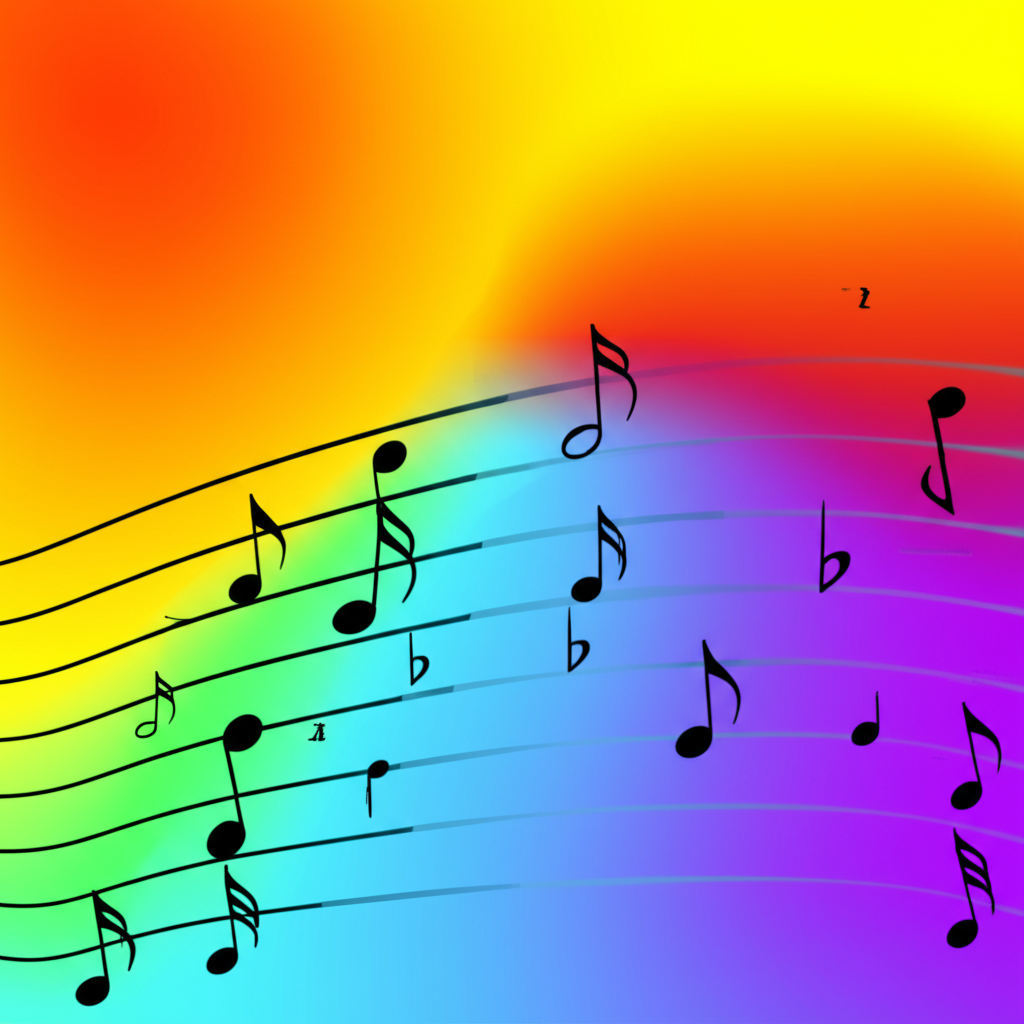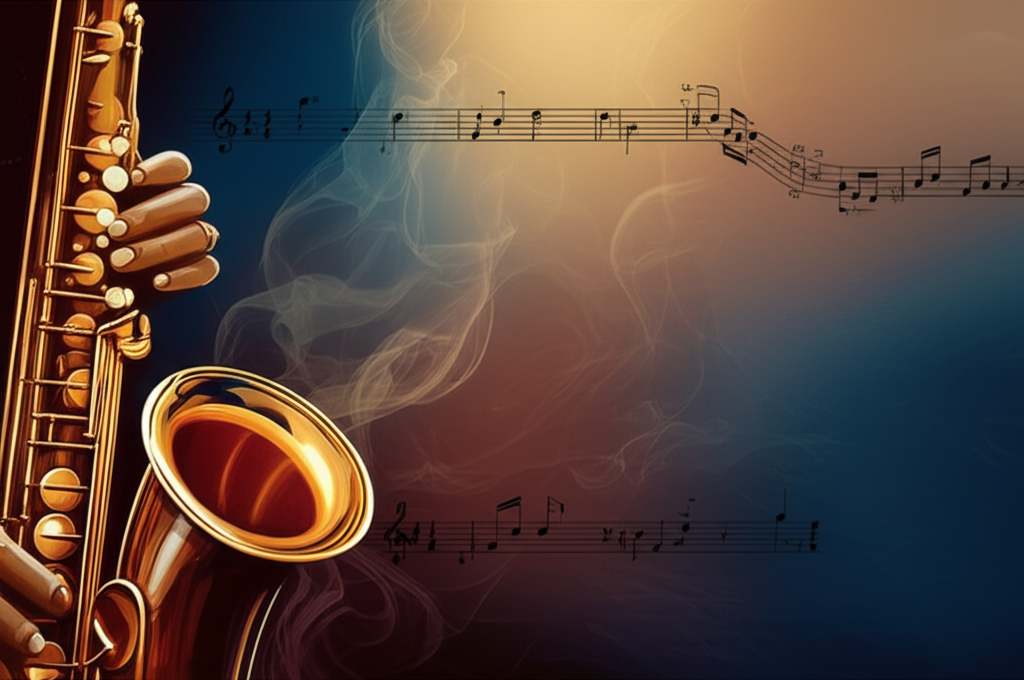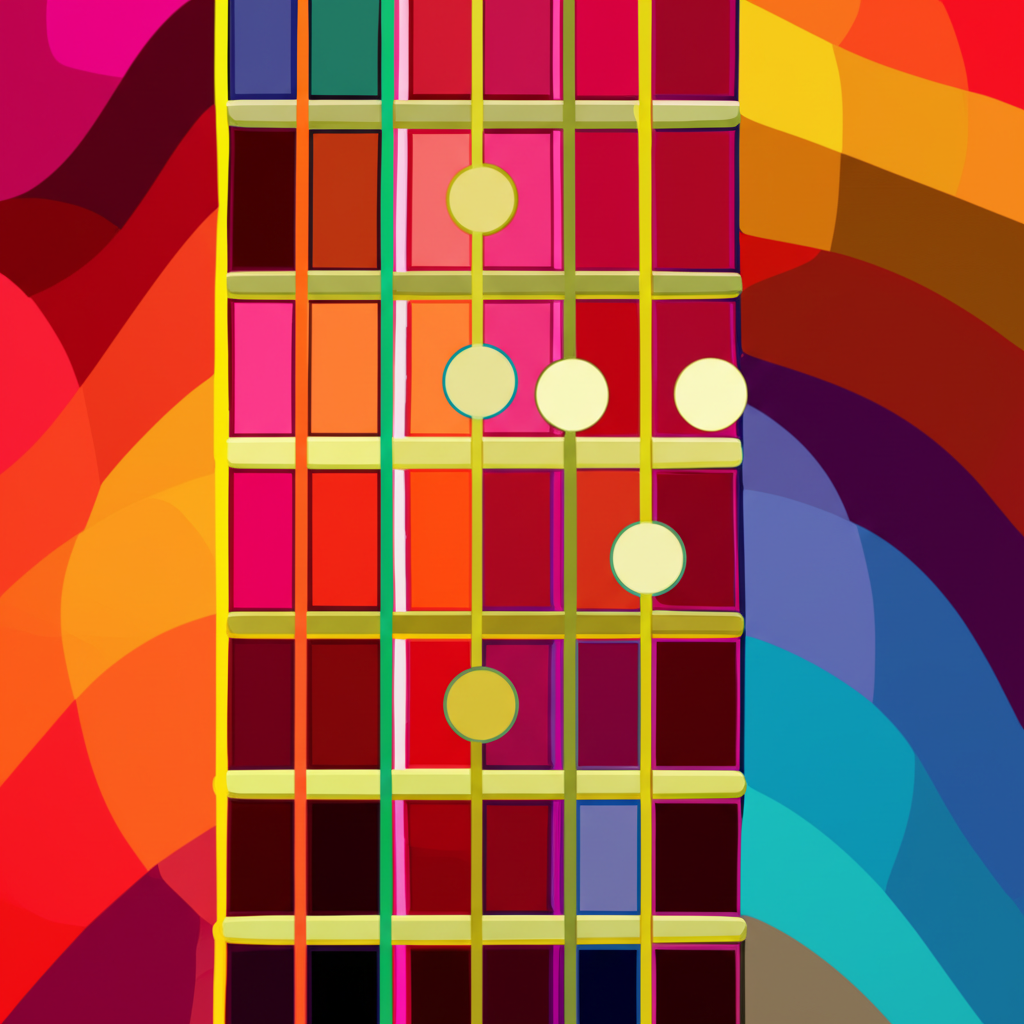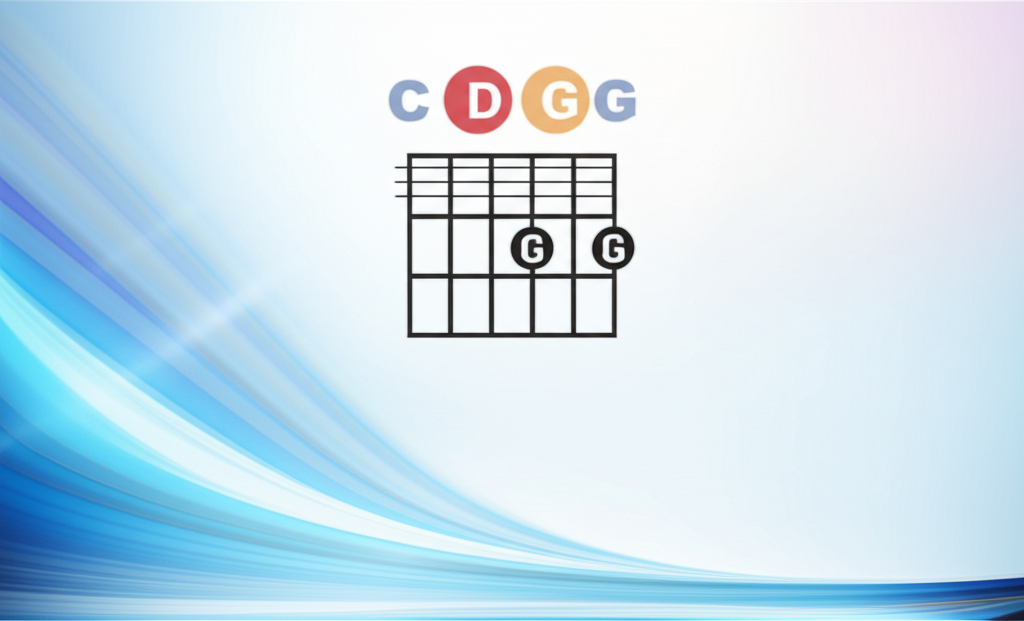
Pentatonic Scales: Universal Simplicity and Expression

b4n1
May 17, 2025, 4:26 p.m.
Pentatonic Scales: Universal Simplicity and Expression
Summary:
Pentatonic scales are five-note musical structures found in virtually every musical culture worldwide. With their two main forms—major and minor—these scales offer accessibility and expressiveness that make them fundamental in genres as diverse as blues, rock, folk music, and Asian popular music. This article explores their structure, sonic characteristics, practical applications, and cultural relevance, providing clear examples and exercises for musicians of all levels.
Keywords:
pentatonic scales, major pentatonic, minor pentatonic, improvisation, blues, rock, folk music, five-note scales
Introduction:
Among all musical scales, pentatonic scales stand out for their remarkable universality and intuitive appeal. Found in musical traditions from China to Scotland, from Africa to the Americas, these five-note scales seem to tap into something fundamental about human musical perception and expression.
The word "pentatonic" literally means "five tones," and this simplicity is part of what makes these scales so powerful and versatile. By eliminating the potential dissonances that can occur in seven-note scales, pentatonic scales create a naturally consonant sound that's both satisfying to the ear and forgiving to play.
In this article, we'll explore the structure, history, and practical applications of pentatonic scales, examining how they've shaped musical expression across cultures and how you can incorporate them into your own musical practice.
Structure of Pentatonic Scales
As the name suggests ("penta" means five in Greek), pentatonic scales consist of five notes per octave, in contrast to the seven notes of conventional diatonic scales (like the major or minor scales).
Major Pentatonic Scale
The major pentatonic scale is derived from the diatonic major scale, omitting the fourth and seventh degrees. Taking C major (C, D, E, F, G, A, B) as a reference, the C major pentatonic would be:
C - D - E - G - A
Its interval pattern is:
Whole - Whole - Whole and a half - Whole - Whole and a half
We can visualize the major pentatonic scale as the resulting scale if we only play the black keys of the piano starting from F♯ (or G♭):
F♯ - G♯ - A♯ - C♯ - D♯
Minor Pentatonic Scale
The minor pentatonic scale is the relative mode of the major pentatonic, starting on the sixth note of the major pentatonic scale. Alternatively, it can be derived from the natural minor scale by omitting the second and sixth degrees.
The A minor pentatonic (relative to the C major pentatonic) contains the notes:
A - C - D - E - G
Its interval pattern is:
Whole and a half - Whole - Whole - Whole and a half - Whole
Like the major pentatonic scale, the minor pentatonic can be visualized on the piano using only black keys, but starting from D♯ (or E♭):
D♯ - F♯ - G♯ - A♯ - C♯
Relationship between Pentatonic Scales
It's important to understand that each major pentatonic scale has a relative minor pentatonic (starting on the sixth degree of the major pentatonic), similar to the relationship between major and minor diatonic scales:
- C major pentatonic → A minor pentatonic
- G major pentatonic → E minor pentatonic
- D major pentatonic → B minor pentatonic
- A major pentatonic → F♯ minor pentatonic
- E major pentatonic → C♯ minor pentatonic
This relationship is fundamental to understanding how to use these scales in different harmonic contexts.
Sonic Characteristics
Major Pentatonic
The major pentatonic scale has an inherently cheerful, stable, and open character. By eliminating the fourth (subdominant) and seventh (leading) degrees of the major scale, the notes that create the most harmonic tension are removed, resulting in a "safe" sound that rarely produces noticeable dissonances, even when played against chords outside its key.
Its sonority evokes folk music from many cultures, particularly East Asia, and has a joyful character that makes it ideal for children's melodies and festive music.
Minor Pentatonic
The minor pentatonic scale has a more melancholic and expressive character, but retains the harmonic stability of its major counterpart. Its sound is immediately recognizable as the "blues sound," and forms the melodic vocabulary of rock, from Eric Clapton's guitar solos to Keith Richards' riffs.
Like the major pentatonic, it is harmonically versatile and "safe," working well over a wide variety of harmonic progressions without creating severe dissonances.
This scale achieves a unique balance between emotional expressiveness and ease of use, which explains its popularity among musicians of all levels.
Practical Applications
Improvisation with Pentatonic Scales
Pentatonic scales are often the first tool musicians use to explore improvisation, and for good reasons:
- Harmonic safety: Lacking semitones and high-tension notes, pentatonic scales rarely sound "wrong," even against complex harmonic progressions.
- Simplicity: With only five notes to remember, the brain and fingers can internalize these scales more quickly than seven-note scales.
- Flexibility: A single pentatonic scale can work over multiple chords, facilitating improvisation over harmonic changes.
In practice, improvisers often start with simple patterns within the pentatonic scale before introducing more advanced techniques such as:
- Bending and expressive techniques: Especially on guitar and harmonica, where notes of the minor pentatonic scale can be "bent" towards tension notes (like the augmented 4th or "blue note").
- Position shifts: Moving between different positions of the same scale to explore different registers and fingerings.
- Scale substitutions: Alternating between relative pentatonics (major/minor) or switching to a pentatonic in another key to create color.
Example: Improvisation Pattern with Minor Pentatonic
Pentatonics in Blues
Blues represents perhaps the most iconic use of the minor pentatonic scale. Blues musicians traditionally enrich the minor pentatonic by adding the so-called "blue note" (the diminished fifth or augmented fourth), creating the blues scale:
This addition creates the characteristic tension and expressive "lament" of the blues. In this genre, the minor pentatonic scale (often with the blue note) is used over the entire chord progression, even as the chords change, intentionally creating "sweet dissonances" that define the sound of blues.
A fascinating feature of blues is how musicians navigate between the minor and major pentatonic scales to create different expressive nuances, often within the same phrase.
Pentatonics in Rock
Rock inherited its melodic vocabulary directly from blues, with the minor pentatonic scale as its cornerstone. From Chuck Berry's foundational riffs to Led Zeppelin's epic solos, the minor pentatonic has dominated the rock landscape.
In rock, guitarists developed characteristic patterns based on the minor pentatonic, such as:
Example: Rock Riff in Minor Pentatonic
Rock subgenres have explored different facets of pentatonic scales:
- Hard rock and metal emphasize rhythmic patterns and speed techniques within the pentatonic scale
- Southern rock mixes elements of both major and minor pentatonic scales
- Progressive rock introduces modulations between different pentatonics and combinations with other scales
Pentatonics in Folk and Traditional Music
Pentatonic scales are prominent in musical traditions worldwide:
- China and East Asia: Traditional Chinese, Japanese, and Korean music is based on pentatonic systems, creating their distinctive oriental character. Traditional instruments like the guzheng or koto are tuned pentatonically.
- Celtic Music: Many Irish and Scottish folk melodies use pentatonic scales, especially on instruments like the flute, violin, and bagpipes.
- Africa: Various African musical traditions employ five-note scales, particularly on instruments like the kora, balafon, and mbira.
- Andean Music: Indigenous melodies from the Andes frequently use pentatonic structures, giving this music its characteristic sound.
The universality of pentatonic scales across cultures that historically had little contact with each other suggests that there is something fundamentally appealing and intuitive about these five-note musical structures.
Pentatonics in Jazz
In jazz, pentatonic scales are used in sophisticated ways to create color and tension over complex harmonic structures:
- "Outside" Pentatonics: Deliberately using a pentatonic scale that doesn't correspond to the current harmony to create controlled tension.
- Pentatonic Pairs: Combining two pentatonic scales to create 8-10 note scales with distinctive colors.
- Pentatonics over Altered Chords: Using specific pentatonics to navigate altered dominant chords (like the minor pentatonic starting on the flat fifth of a dominant chord).
Musicians like John Coltrane, McCoy Tyner, and Chick Corea revolutionized the use of pentatonics in sophisticated harmonic contexts.
Pentatonic Scales on the Instrument
Guitar
On guitar, pentatonic scales are organized into "boxes" or positions that allow playing the entire scale in one area of the neck. The basic pattern of the minor pentatonic (here for A minor) looks like this:
For A minor pentatonic (A - C - D - E - G):
E |---5---8-| B |---5---8-| G |---5---7-| D |---5---7-| A |---5---7-| E |---5---8-|
This pattern can be moved to any fret to play the minor pentatonic in any key (for example, moving it to the 3rd fret would produce C minor pentatonic).
Piano
On piano, the major pentatonic scale can be visualized as a pattern of "two black keys, three black keys" starting on the correct key. For example, for C major pentatonic:
C - D - E - G - A
The minor pentatonic follows a similar pattern but starting on a different note (A for the relative minor of C major):
A - C - D - E - G
Wind Instruments
On wind instruments like flute, saxophone, or trumpet, the fingerings for pentatonic scales are subsets of the normal diatonic scales, making them relatively easy to play.
Practical Exercises
Exercise 1: Familiarization with Pentatonics
Start by playing the major and minor pentatonic scales in various keys, ascending and descending. Notice how each has its own sonic character.
Exercise 2: Motif Development
Create a short motif (3-5 notes) using notes from the minor pentatonic scale. Then develop this motif:
- Repeating the motif in different octaves
- Inverting the motif (opposite direction)
- Expanding or contracting the intervals of the motif
- Applying rhythmic variations to the same note content
Exercise 3: Major/Minor Alternation
Practice alternating between a major pentatonic and its relative minor over a simple chord progression. For example, over a progression in C major (C - G - Am - F), alternate between C major pentatonic and A minor pentatonic.
Example: Major/Minor Alternation
Notación musical:
Exercise 4: Adding "Outside" Notes
Start improvising with the minor pentatonic and gradually incorporate additional notes to create more tension:
- Add the "blue note" (b5 or #4) to create the blues scale
- Incorporate the 2nd and 6th to complete the natural minor scale
- Use chromatic notes as approach or passing notes
Pentatonics in Composition
Pentatonic scales provide an excellent starting point for melodic composition due to their melodically stable nature. Consider these approaches:
Theme Development
Many memorable themes use exclusively notes from the pentatonic scale. Examples include:
- "Amazing Grace" (major pentatonic)
- The main theme from "Star Wars" (mainly major pentatonic)
- The main riff from "Smoke on the Water" (minor pentatonic)
To compose with pentatonics:
- Start with a simple motif using 3-4 notes from the pentatonic scale
- Develop the motif through repetition, sequencing, or inversion
- Vary the rhythm while keeping the melodic contour recognizable
- Consider strategic moments to step outside the pentatonic for expressive effects
Pentatonic Perspective Shifts
An interesting compositional technique is to "reinterpret" a pentatonic melody in different harmonic contexts:
Example: Pentatonic Melody with Different Harmonizations
Notación musical:
This type of recontextualization can create surprising emotive effects with simple melodic material.
Beyond Basic Pentatonics
Altered Pentatonics
Beyond the standard major and minor pentatonics, there are other pentatonic constructions with distinctive sonic qualities:
- Major Pentatonic with Added 6th: Replaces the 3rd with the 6th (example: C, D, F, G, A)
- Suspended Pentatonic: Replaces the 3rd with the 4th (example: C, D, F, G, A)
- "Hirajoshi" Pentatonic: Japanese scale (example: A, B, C, E, F)
- "Man Gong" Pentatonic: Chinese scale (example: C, D, E, G, B)
Exploring these alternative constructions can open up new expressive possibilities beyond conventional pentatonics.
Scale Combinations
Advanced musicians often combine fragments of different pentatonic scales to create unique tonal colors:
- Pentatonic Superimposition: Using a pentatonic that doesn't correspond to the key to create tension (like using D pentatonic over a C chord)
- Pentatonic Pairs: Combining two pentatonic scales separated by a specific interval (like C and F# pentatonics)
- Pentatonic Modulation: Smoothly changing between different pentatonics following the harmonic progression
Conclusion:
Pentatonic scales, with their extraordinary mix of simplicity and expressiveness, represent one of the most fundamental and universal elements of human musical language. Their presence in virtually all musical cultures worldwide underscores something deeply intuitive in their construction that resonates with our innate sense of melody and expression.
From their simplest applications—as an introductory tool for beginner improvisers—to their more sophisticated uses in modern jazz or contemporary concert music, pentatonics continue to be versatile and powerful melodic resources. Their ability to function in multiple harmonic contexts, ease of execution, and immediate auditory appeal make them indispensable tools for any musician.
Whether you are starting your musical journey or looking to expand your expressive palette as an experienced performer or composer, pentatonic scales offer a rich territory for exploration and discovery. In their apparent simplicity lies an almost limitless expressive potential, waiting to be developed by creative musicians in any genre or tradition.
References:
-
Levine, Mark. (1995). "The Jazz Theory Book". Sher Music Co.
-
Ligon, Bert. (2001). "Jazz Theory Resources". Houston Publishing.
-
Nettl, Bruno. (1956). "Music in Primitive Culture". Harvard University Press.
-
Solomon, Larry. (2002). "Pentatonic Scales in Jazz Improvisation". Jamey Aebersold Jazz.








